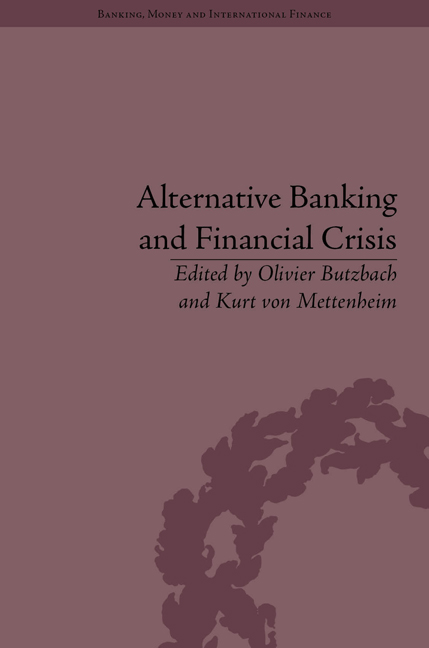Book contents
- Frontmatter
- CONTENTS
- Acknowledgements
- List of Contributors
- List of Figures and Tables
- Introduction
- Part I Historical Context and Conceptual Framework
- Part II Comparative Country Cases
- 5 A Qualitative and Statistical Analysis of European Cooperative Banking Groups
- 6 The Persistence of the Three-Pillar Banking System in Germany
- 7 Alternative Banks in a Dualistic Economy: The Case of Italy before and during the Euro Crisis
- 8 Alternative Banks on the Margin: The Case of Building Societies in the United Kingdom
- 9 The United States: Alternative Banking from Mainstream to the Margins
- 10 BRIC Statecraft and Government Banks
- 11 Cooperative Banks in India: Alternative Banks Impervious to the Global Crisis?
- Conclusion
- Notes
- Index
11 - Cooperative Banks in India: Alternative Banks Impervious to the Global Crisis?
from Part II - Comparative Country Cases
- Frontmatter
- CONTENTS
- Acknowledgements
- List of Contributors
- List of Figures and Tables
- Introduction
- Part I Historical Context and Conceptual Framework
- Part II Comparative Country Cases
- 5 A Qualitative and Statistical Analysis of European Cooperative Banking Groups
- 6 The Persistence of the Three-Pillar Banking System in Germany
- 7 Alternative Banks in a Dualistic Economy: The Case of Italy before and during the Euro Crisis
- 8 Alternative Banks on the Margin: The Case of Building Societies in the United Kingdom
- 9 The United States: Alternative Banking from Mainstream to the Margins
- 10 BRIC Statecraft and Government Banks
- 11 Cooperative Banks in India: Alternative Banks Impervious to the Global Crisis?
- Conclusion
- Notes
- Index
Summary
Introduction
Cooperative banks occupy a unique position in the rural credit delivery system of India, having long played a significant role in the provision of short-and long-term loans for agriculture and rural development. Although commercial banks (after their nationalization) and later the regional rural banks (RRBs) have entered rural areas, cooperative banks still continue to hold an important place in the rural credit scenario in India. The cooperative credit societies at the grassroots level aim not only to cater to the credit needs of its members, but also to provide several credit-related services – such as the supply of inputs, the storage and marketing of products, and the supply of consumer goods, etc. – to farmers, whose basic need continued to be timely credit.
Keeping in view the importance of cooperative banks and credit societies in India, several committees have been set up by the Government of India to look into the efficiency of the sector, from the All India Rural Credit Survey Committee (created in 1954) to the latest high-profile Vaidyanathan Committee (2004) – all of which emphasized the important role cooperatives play in providing credit and related services to rural areas. The process of economic reforms began in India during the 1990s, but cooperative banking, though an integral part of the country's financial system, was kept insulated from the effects of these reforms.
- Type
- Chapter
- Information
- Alternative Banking and Financial Crisis , pp. 211 - 226Publisher: Pickering & ChattoFirst published in: 2014

